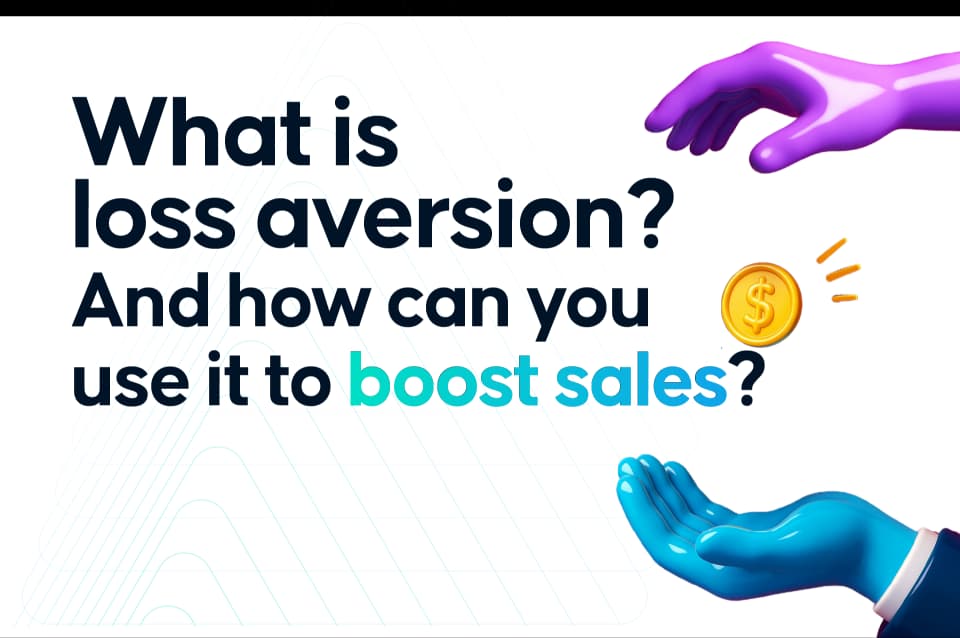What is loss aversion? And how can you use it to boost sales?
Imagine being twice as affected by losing $100 as you are by gaining the same amount. This disproportionate emotional response is known as loss aversion, a concept first introduced by Nobel laureate Daniel Kahneman and his colleague Amos Tversky. It fundamentally changed the way marketers understand consumer behavior.

Imagine being twice as affected by losing $100 as you are by gaining the same amount. This disproportionate emotional response is known as loss aversion, a concept first introduced by Nobel laureate Daniel Kahneman and his colleague Amos Tversky. It fundamentally changed the way marketers understand consumer behavior.
Understanding loss aversion
Loss aversion, a key principle in behavioral economics and psychology, describes people's tendency to prefer avoiding losses rather than acquiring equivalent gains. In simpler terms, the pain of losing something is psychologically about twice as powerful as the pleasure of gaining the same thing.
Kahneman and Tversky explored this concept extensively in their seminal work, Prospect Theory (1979). They illustrated how individuals weigh losses more heavily than gains when faced with choices involving risk and uncertainty. This has profound implications for marketing strategies, particularly in pricing, promotions, and consumer retention efforts.
Psychological background
Why are we more sensitive to losses than gains? Evolutionary psychology suggests that loss aversion evolved as a survival mechanism, compelling individuals to prioritize preserving existing resources over the pursuit of new ones. Essentially, losing vital resources could have been life-threatening, whereas acquiring new ones merely improved comfort or convenience.
Neuroscientific research further supports loss aversion, demonstrating that potential losses activate areas of the brain associated with emotional distress and fear, significantly more than potential gains stimulate pleasure centers.
Practical tips: How to leverage loss aversion in marketing
Here’s how you can strategically use loss aversion to boost your sales: - Limited-time offers Creating urgency through time-limited promotions effectively leverages loss aversion. Customers fear missing out (FOMO) on deals more than they desire the product itself, motivating quicker purchasing decisions.
Example: "Only 5 items left in stock! Hurry before it’s too late!"
- Highlight potential losses Emphasize what customers stand to lose rather than what they might gain. This framing encourages immediate action.
Example: "Don't lose your exclusive discount. Offer expires tonight!"
- Free trials and freemium models When users enjoy a service or product for free initially, removing this benefit creates a perceived loss, often persuading them to subscribe or purchase.
Example: Streaming services offering a free trial period, after which access is revoked unless payment is made.
- Loyalty programs Rewarding repeated purchases and then reminding customers of what they might lose if they don't continue purchasing maintains engagement.
Example: Frequent flyer miles that expire if unused within a certain period.
- Cart abandonment reminders Gently reminding customers about products left in their online shopping cart can trigger loss aversion, nudging them to complete their purchase.
Example: "Your cart is waiting—don’t miss out!"
Conclusion
Understanding and effectively applying loss aversion in your marketing strategy can significantly increase customer engagement and sales conversions. By thoughtfully incorporating these psychological insights into your marketing efforts, you not only capture your audience's attention but also motivate action through the powerful fear of loss. Ready to take your marketing strategy to the next level using behavioral insights like loss aversion? Contact our digital marketing experts today!